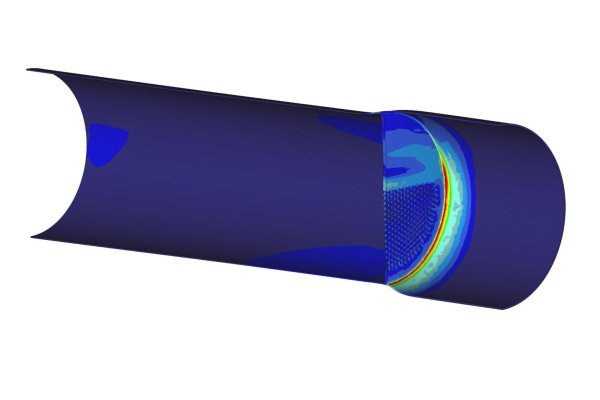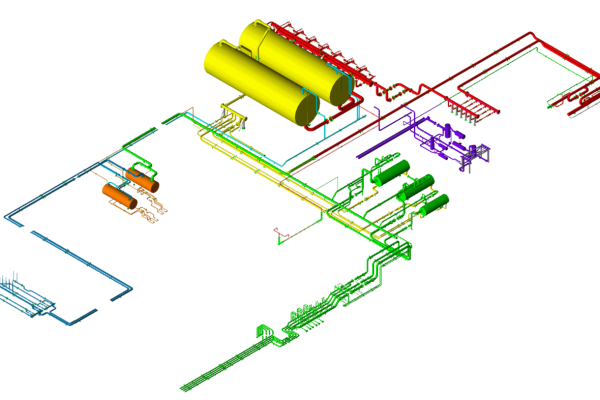Introduction
In this case study, the focal point was addressing the high vibration levels observed in the process piping extending from a heat exchanger to a separator. Concerns were raised regarding the potential for dynamic stress to induce fatigue failures in the equipment nozzles over time. The flow within the piping consisted of a two-phase mixture of liquid and gas, resulting in slug formation and generating unsteady dynamic loads. Given space limitations, modifying the pipe support system or the separator vessel nozzle was deemed undesirable. Thus, the client sought solutions to mitigate the vibration levels without resorting to extensive modifications.
Analysis
To start the analysis, the most probable excitation mechanism was estimated based on process data. Two-phase flow, particularly slug formation, was identified as the dominant source of excitation, characterized by its stochastic nature and lack of fixed patterns. Such excitations tended to resonate with multiple mechanical natural frequencies and mode shapes within the piping system.

Comprehensive modeling was conducted to encompass the relevant piping systems, including connected vessels and supporting steel structures. The existing configuration was statically and dynamically analyzed to establish a baseline reference. Despite efforts, it was determined that avoiding slug flow regimes was not practically feasible.
“Two-phase flow or slug formation excitations are characterized by the lack of a fixed excitation and show a large amount of randomness.”
Results
The results revealed potential solutions to mitigate vibration levels. Increasing the pipe diameter from 400 to 500 mm emerged as a viable option, projecting a reduction in impact loads and subsequent vibration levels at nozzle flanges by 35 to 59%, contingent upon the direction.
Additionally, an alternative solution involving the re-routing of piping was explored. This approach aimed to alter the direction of load impacts and dynamic system responses. Analysis indicated a potential reduction of 16 to 83% in vibration levels at nozzle flanges, depending on the direction of impact.







